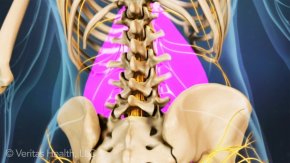
How to Help a strained Lower back?
 No single treatment option works for everyone, but here are three first-aid remedies to help alleviate the intense pain from your pulled lower back muscle:
No single treatment option works for everyone, but here are three first-aid remedies to help alleviate the intense pain from your pulled lower back muscle:
Article continues below
Try cold therapy for your pulled lower back muscle
As a general rule, cold therapy is preferred over heat therapy for the first 24 to 48 hours after pulling a muscle in your lower back—and cold therapy may produce any of the following benefits:
- Reduced inflammation and swelling around your damaged muscle—which in turn can alleviate your pain.
- Numbed tissue (which provides pain relief akin to a local anesthetic).
- Slowed nerve impulses in the damaged area, which hinders the pain-spasm reaction between your nerves. In other words, cold therapy can help prevent muscle spasms following a pulled muscle injury.
Remember to limit the application of cold therapy to 20 minute increments to avoid ice burns.
Get a massage
Of course, it’s not always possible to head over to your local masseuse following a pulled lower back muscle injury. But with only duct tape and two tennis balls, you can enjoy a DIY massage on the floor of your home or office. If lying on the floor isn’t possible, you can also press a tennis ball between your chair and lower back.
Benefits of massage therapy for your lower back muscle spasm include:- Increased blood circulation—which brings healing nutrients to your damaged muscle.
- Increased production of endorphins, your body’s natural pain-reliever.
- Relaxed lower back muscles.
Take muscle relaxants
Often times, the inflammation from a pulled lower back muscle can cause your muscle to spasm. If you experience muscle spasms, you may want to talk to your doctor about taking muscle relaxants on a short-term basis (muscle relaxants need to be prescribed by your doctor). The goals of muscle relaxants include reducing your overall number of spasm episodes, relieving your pain, and improving your mobility.
It’s important to note that the term muscle relaxant does not refer to a class of drugs, but rather to a group of various drugs that all have an overall sedative effect. Occasionally, the first muscle relaxant your doctor prescribes may not be effective—and so you may need to try several options.
All of the above first-aid remedies can help relieve the intense pain from a pulled lower back muscle—but the best way to avoid a pulled muscle is to engage in regular exercise. Exercise helps to stretch your lower back muscles, which makes them less likely to strain, tear, or spasm.









